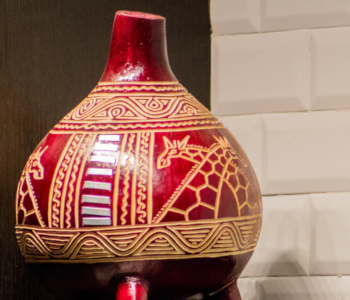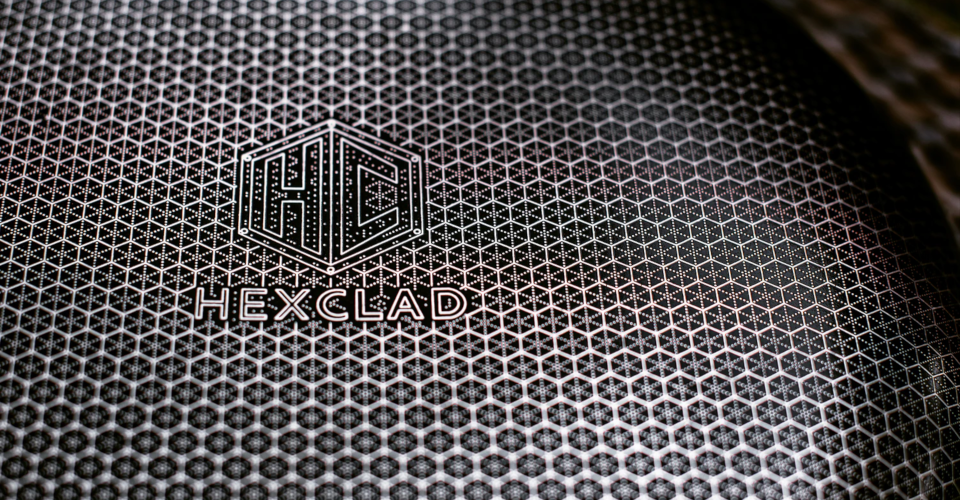Laser Etching vs. Laser Engraving – How Are They Different?
Lasers, while not a new technology, have become a revolutionary alternative for the marking and labeling of goods and products. Laser-marked labels are highly detailed, legible, and can withstand heavy abrasion without getting erased. Moreover, the laser marking process produces minimal waste and is very compatible with modern automated CNC processes.
Those who want to go into laser marking need to be familiar with the terms first. There are two major techniques used in this industry – laser etching and laser engraving. Although highly similar, there are crucial differences between which we shall be discussing here.
What is laser etching?

Laser etching creates high-contrast marks on materials through the emission of a high-energy laser beam. This causes the melted material to expand before re-solidifying, thus creating prominent bumps.
A characteristic of laser etching is that it creates features that are no more than 0.001 inches in depth. This does not mean that the marks made by etching are less prominent. The melting process changes the composition of the material and gives it a deep contrast relative to the original material. This contrast manifests not just in the hue of the material but also in its reflectivity and texture.
Pros and cons
Ideal for thin and fragile materials
Compared to engraving, laser etching creates marks without removing a significant amount of material. This makes laser etching more appropriate when dealing with very thin metal layers or fragile objects. Jewelry, particularly those made with precious metals or glass, are often processed using laser etching. Laser etching can also be done on ceramics, polymers, or materials that have been treated with metal plating.
Creates high-contrast marks
Laser etching excels in creating marks that are as visible and prominent as possible. Through different techniques, laser etching can create both black and white marks across a variety of surfaces. Laser etching is so effective in this respect that it is common for it to be combined with laser engraving if a manufacturer wishes to add more contrast to an engraved design.
Faster
Laser etching can typically be done on any material with just one pass of a laser beam. Since laser etching only affects a very small amount of material, it is a very fast process. This is a huge benefit to large-scale manufacturing or any process that requires a quick turnover. Compared to laser engraving, laser etching is about twice as fast.
Requires less energy
Laser etching does not need to use a high-intensity laser, neither does it need a long time to process a single workpiece. This makes laser etching the less power-intensive alternative to laser engraving. If you’re working with several thousand pieces of laser-marked products per day, this difference in energy usage can make a huge difference in power-related expenses.
Has poor abrasion-resistance
The biggest drawback to using laser etching is the fact that its marks are practically only surface-deep. These are visible as long as the piece is kept clean. However, marks made by laser etching can be easily obscured by a thick layer of dirt and dust.
Moreover, heavy or sustained abrasion can result in the laser-etched marks getting completely erased. This makes laser etching less than ideal for objects that will be used outdoors or are designed to withstand repeated abrasion or application of friction. In terms of durability and permanence, laser etching is decidedly inferior to laser engraving.
What is laser engraving?

What sets laser engraving apart is that it uses a high-powered laser beam to carve the design into the material. The design is cut deep in this case – typically in the range of 0.02 to 0.125 inches. The deep-cut designs made through laser engraving can withstand high wear and tear. For this reason, laser engraving is the technique of choice for highly essential marks such as control numbers and serial numbers.
Laser engraving creates deep marks by exerting enough power for the material to be instantly vaporized. This is a fairly power-intensive process and may require that the laser make multiple passes along the same spot to achieve the desired engraving depth.
Pros and cons
More permanent and durable marks
Laser engraving creates marks that cannot be easily erased by mechanical or chemical means. This state of permanence is one of the major reasons why manufacturers choose to engrave marks instead of printing them on with ink. A laser engraved mark will remain legible even through several years of use, even in outdoor or heavy-duty conditions.
Allows for more customizable designs
More often, laser engraved marks are post-processed to make them more visually appealing or to give them more contrast. It’s quite common for laser engraved marks to get another pass of laser etching to alter their color.
Another method is to infuse the carved design with color using inks or dyes. This is more commonly done when marks are relating to branding, such as in logos or company names.
Slower
The standard depths needed for laser engraving are almost impossible to achieve with a single pass of a standard fiber laser. For this reason, multiple passes are almost always necessary. This significantly lengthens the processing time of a piece that is being marked with laser engraving. The time penalty is significant enough that manufacturers may think twice about using laser engraving for large-volume orders.
Requires more power
The power needed to instantly vaporize a material is a few magnitudes higher than what is needed to melt it. This makes laser engraving much more power-intensive compared to laser etching. This makes the expenses of running a laser engraver higher, both in terms of capital and operating costs.
Which one should you choose?
With the pros and cons of both options laid out, is there one of them that is clearly better than the other? In this case, most industry experts recommend doing laser etching unless you need the abrasion resistance and durability of laser engraving.
Laser etching is cheaper, faster, and creates semi-permanent and highly visible marks. Since it creates only surface-deep marks, it is also more versatile in terms of the materials it can work with.
Laser engraving creates more permanent marks that cannot be removed even with heavy wear and tear. This makes it ideal when the situation calls for permanent marks, such as in serial numbers of parts for traceability. However, it may not be ideal for large-scale manufacturing because it is slow and requires immense levels of power.
While both laser etching and laser engraving are excellent marking options, manufacturers are encouraged to consider laser etching first because it is more practical. Laser engraving is then treated as a second option to be considered when laser etching is not up for the job.
Final thoughts
Laser marking technologies are quickly gaining recognition as the superior alternative to more traditional marking methods that either uses mechanical force or coloring agents. They are fast, easily automated, reliable, require minimal human intervention, and produce only minimal waste.
Laser etching and laser engraving represent the two dominant methods of marking via laser technology. Although their results may look similar, each method takes a critically different approach to make legible and permanent marks on the workpiece. As with any manufacturing method, taking full advantage of laser marking requires knowing exactly how the technology works.

